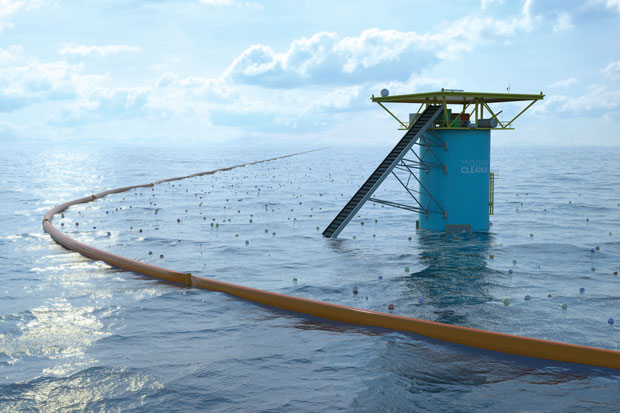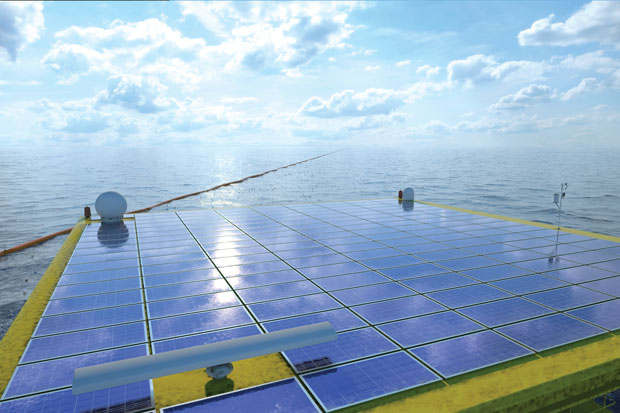The Long Life of Materials

SOLIDWORKS Sustainability provides users an assessment of environmental impact for materials directly within the 3D CAD program. Image courtesy of SOLIDWORKS.
Latest News
October 1, 2015
 SOLIDWORKS Sustainability provides users an assessment of environmental impact for materials directly within the 3D CAD program. Image courtesy of SOLIDWORKS.
SOLIDWORKS Sustainability provides users an assessment of environmental impact for materials directly within the 3D CAD program. Image courtesy of SOLIDWORKS.By some accounts, it’s bigger than Texas. Extending to a depth of 3 ft. on the ocean’s surface, the Great Pacific Garbage Patch drifts in two main clumps, one between Hawaii and California, the other off the Japanese coast. And it’s growing.
Samples taken by researchers turn up bottle caps, toys, fishing lines, buoys and other plastic parts that float, breaking down into ever-smaller pieces that get ingested by sea life and birds. “Plastics are now one of the most common pollutants of ocean waters worldwide,” said Charles Moore, merchant marine captain and founder of the Algalita Marine Research and Education Institute, in a New York Times editorial last year titled “Choking the Oceans With Plastic.” A study he led in 2009 found that particles of plastic outnumbered plankton in the Great Pacific Garbage Patch by six to one. In his editorial, he calls for better-designed products to reduce the amount of garbage being produced.
What Makes a Design Sustainable?
Autodesk is among the companies seeking solutions to the garbage problem. “We want to promote efficiency so we can do more with less, thus requiring fewer extracted resources from the Earth,” says Jonathon Rowe, program manager for the Sustainability Solutions Group.
Besides simply reducing the amount of material in products and packaging, sustainable design must also take into account a product’s complete lifecycle, including how long it lasts and how it is retired, says Rowe. “Durability extends the useful life of products,” he says. This should be a goal of sustainable design. “Design for disassembly and recyclability can channel these materials back into the production stream instead of landfills.”
But Rowe cites the energy efficiency of products as the single most important factor when designing for minimal environmental impact. “Materials-related design decisions, while important, should be prioritized after doing everything possible to make the product energy efficient.”
In addition to energy consumption, other considerations are carbon impact, water impact and air impact to round out what can be seen as the top four considerations for good sustainable design, says Eric Leafquist, senior product portfolio manager at SOLIDWORKS. “These factors encompass product operation, packaging, product weight, manufacturing location, shipping methods, production methods, etc.,” he says.
Using less material, often called lightweighting, is one factor that can improve both environmental impact and overall performance—but not always, cautions Leafquist. Increased use of recycled components, for example, could actually add weight to some products while also reducing overall environmental impact. At the same time, for products such as cars, reduced weight can dramatically lessen environmental impact. “A 10% weight reduction in a vehicle can typically lead to a 6% to 7% increase in fuel economy,” says Rowe.
Sustainable Design Tools
Autodesk and SOLIDWORKS are among the companies offering tools to assist in designing for sustainability. For example, Autodesk Inventor comes with the Eco Materials Advisor tool, which can rate the materials in design concepts according to such criteria as how much energy is used to produce them, whether they contain potentially harmful chemicals, their impact on water supplies, and how easy it is to recycle them. SOLIDWORKS Sustainability integrates with SOLIDWORKS 3D CAD software to provide a similar picture of the environmental impact of materials in a given design. Such lifecycle assessment tools can help designers make informed decisions about mitigating the environmental impact of their designs while showing them any potential performance tradeoffs.
One area of sustainability that’s getting a lot of attention is packaging, according to Prashant Jagtap, president and CEO of product lifecycle assessment software provider Trayak. “When you first get a product, that’s the first thing that you open and throw,” he says. That added focus has manufacturers focusing their attention on reducing the environmental impact of the waste stream that results. And, of course, much of that packaging may be plastic that can find its way into the oceans.
Among the factors that Tryak’s cloud-based software can help designers determine is the extent to which a given design and its packaging will be recyclable or reusable. “Companies are now putting targets on their products,” he says. “We help with assessing that.” A target may include, for example, what percentage of a product or its packaging can be recycled. Jagtap has observed that the leading companies in their industries are continuing to drive the ongoing move toward sustainability. “I don’t see any reduction in terms of investment,” he says.
Among his own initiatives, Jagtap and his team are working to make environmental sustainability not just a good idea, but also a way to boost the bottom line. Fortunately, he says, it’s not a stretch. “Sustainability,” he says, “is also about lean design. Use less material. Use material that lasts longer. Design a product that lasts longer.” Such features, Jagtap says, can do more than lessen environmental impact; they can also add value to manufacturers and end users alike.
Other experts echo the idea that sustainable products can benefit design and production. “Environmental impact improvements drive improvements in other areas as well,” says Terry Swack, CEO of lifecycle assessment software provider Sustainable Minds. “Our mission is to drive revenue and growth through greener product innovation.”
The Future of Sustainability
The environmental impact of products will increasingly become one of the top three considerations for good design, right alongside cost and function, says Leafquist. “Environmental impact, overall product cost and overall function,” he says, “form three legs of an overall product triangle that we will hear much more about in the near future.”
As awareness grows of the negative impact on our environment of the products that we produce—for example, the growth of the Great Pacific Garbage Patch—we can expect to see a corresponding impact on the regulatory environment, says Leafquist. “Sustainability and compliance issues will likely blur in the future in my opinion,” he says.
Algalita Marine Research Institute’s Moore says nothing can be done about the garbage already adrift, but a 21-year-old former aerospace engineering student from the Netherlands begs to differ. In 2013, Boyan Slat started a crowd-funded, volunteer-staffed foundation called The Ocean Cleanup tackling the problem of plastic waste in the oceans.
 The proposed array for The Ocean Cleanup with a collection station is pictured. Image courtesy of The Ocean Cleanup.
The proposed array for The Ocean Cleanup with a collection station is pictured. Image courtesy of The Ocean Cleanup.In August, the group completed the latest of a series of surveys of the Great Pacific Garbage Patch to characterize its composition, behavior, depth and other factors, with a view toward engineering a cleanup.
The foundation’s plan is to launch a system of booms and processing platforms that Slat says will be able to scoop up plastic down to 0.1 millimeters without harming sea life. The booms will collect and concentrate the plastic, guiding it to the platforms, which will then suck up the smaller particles with a slurry pump and centrifuge. A several-meter-wide conveyor “skirt” on each platform will scoop up the larger pieces. The design for the system calls for 162 solar panels to power each platform.
Computer simulation and scale models have resulted in a boom design that can stand up to most storms, Slat says, while a 40-meter prototype has provided proof of concept. Slat figures a 100-kilometer array could gather up close to half of the plastic in the North Pacific within 10 years, at a cost of $6 per kilogram. The Ocean Cleanup aims to start full-scale operation by 2020, scaling up from smaller versions, and funding itself in part by turning plastic into oil.
 The Ocean Cleanup’s collection stations are powered with solar photovoltaic panels. Image courtesy of The Ocean Cleanup.
The Ocean Cleanup’s collection stations are powered with solar photovoltaic panels. Image courtesy of The Ocean Cleanup.In the meantime, however, we would do well to reduce the amount of plastic reaching the oceans in the first place. Filters on storm drains, ordinances banning plastic bags in supermarkets and other ways to stem the tide of garbage are finding traction. But products that are designed for lighter environmental impact from the beginning are an essential part of the solution.
For More Info
Subscribe to our FREE magazine, FREE email newsletters or both!
Latest News
About the Author
Michael Belfiore’s book The Department of Mad Scientists is the first to go behind the scenes at DARPA, the government agency that gave us the Internet. He writes about disruptive innovation for a variety of publications. Reach him via michaelbelfiore.com.
Follow DE





